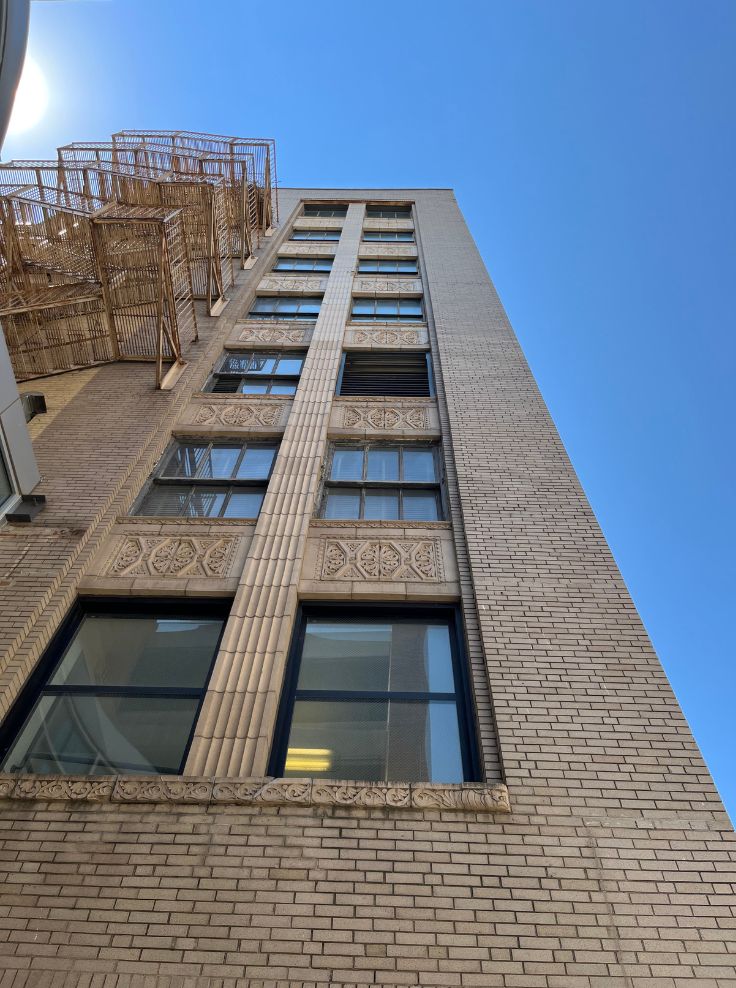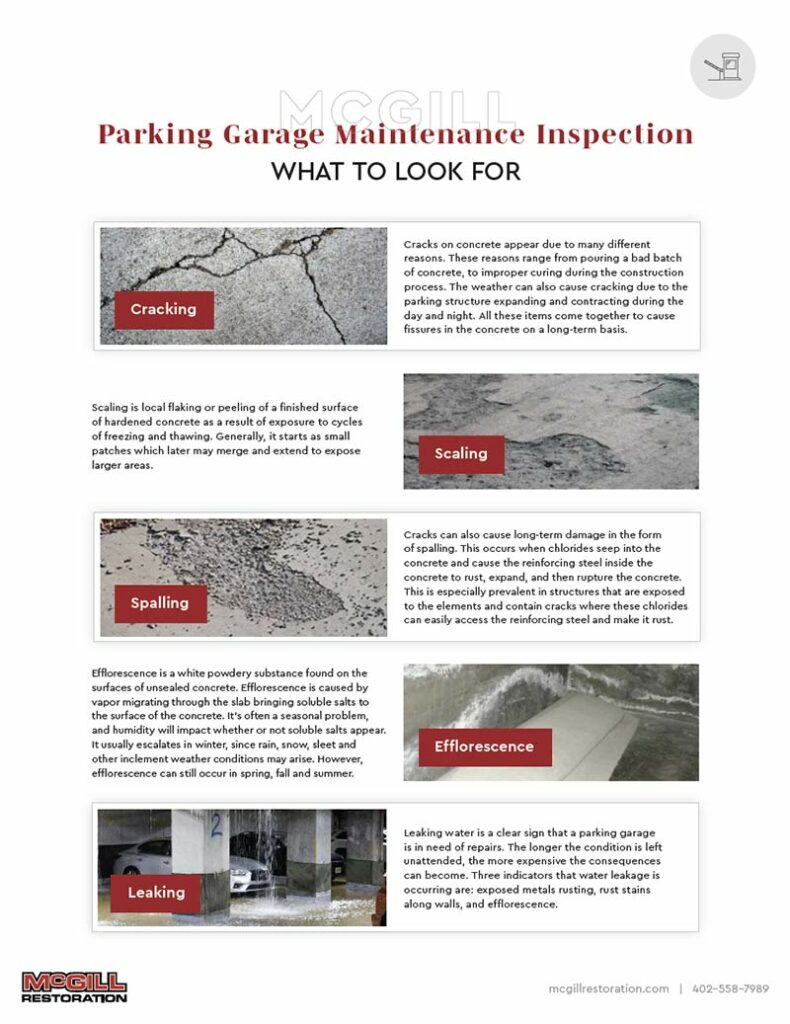Do you REALLY understand the current condition of your commercial structure?
Most folks walk past crumbling and damaged masonry without noticing the problem. Without a trained eye, observing masonry damage is difficult and it often takes a major event to reveal problems.
At McGill Restoration, many of our customers call when they notice these common masonry issues:
- Major water leaks
- Bricks dislodging and falling to the ground
- Shifting corners and widened joints
- Obvious cracks in brick and masonry
- Cracks in building facade
While these problems require immediate attention, it helps to implement annual inspection and maintenance plans to identify damage before the bricks literally fall off the building. The following are some of the more common masonry problems we see on a regular basis.
5 Common Masonry Issues
Problem #1 – Spalling and Broken Masonry from Water Intrusion
Visible crumbling from the separation of bricks is surprisingly common. However, the issue frequently goes unnoticed until many bricks are crumbling, dislodged, or pulling away from the building. When the damage is centralized on a high, vertical wall, it’s especially difficult to see.
These problems are almost always caused by water intrusion. While repairing the masonry will be necessary, solving the water entry issue is also an important part of the process. Water typically enters from failed joint sealants, clogged drainage pipes, and other vulnerable points in the structure.
Problem #2 – Problematic Mortar Joints
Bricks and any adjoining masonry blocks use mortar like connective tissue. The mortar is important because it solidifies the individual pieces into a singular structure and it helps repel water from entering between the blocks. When water does enter, it can freeze, thaw and erode the bricks or blocks.
Repairing or replacing the mortar to stop water intrusion is important. Unfortunately, many owners and even maintenance workers will use a common mortar material to patch things up. Mortars are not universal however and selecting the correct type is important.
For example, a building with breathable mortar is designed to essentially exhale. Moisture is repelled and any that enters can breathe outward through the mortar. If you patch the failing mortar with a completely watertight material, it will lock that moisture inside and potentially increase the damage caused.
Make sure to use the correct materials when patching mortar on any masonry structure as it’s one of the more common brick masonry wall issues.
Problem #3 – Failed Joint Sealants
We already noted the importance of joint sealants as a primary means of stopping water entry. It’s worth noting again because these sealants are critical on every parking structure and masonry building.
While joint sealants are not direct masonry repair issues, they are often the root cause of damage. Sealants can last 15-20 years and even longer in some structures depending on traffic and exposure to harsh elements. That said, annual inspections are critical to ensure they are stopping water entry.
Pay special attention to joint sealants around:
- Window openings
- Door and entryway areas
- Places where the building connects to adjoining surfaces
Freeze and thaw cycles are hard on joint sealants and structures in winter environments require extra diligence.
Problem #4 – Cap Flashing Failures
More common in older structures, cap flashing is a protective measure installed to stop water from dripping down the brick face of a building. Clay caps around three feet long with a joint between each are standard.
Pay attention to the joint between each cap because they offer water an opportunity to enter. Replacing the joints is one option, but metal flashing is ideal because it can be custom fit. Many new buildings use metal flashing to eliminate joints while creating a watertight seal that lasts.
Problem #5 – Stressed and Bowing Walls
When water is pervasive, masonry walls will begin to flex and bow. This is a clear sign that restoration work is needed to repair the structural wall and the source of water entry. A lack of cap flashing or incorrect installation that allows water to seep into masonry elements is a common cause of bowing walls.
If you see bowing and flexing in a masonry wall, contact a restoration expert immediately to address the issue.
How to Deal with Common Masonry Issues on Your Structure
When you notice one of the latter masonry issues on your structure, take the time to plan proper repairs. Improper replacement of bricks, painting brick, using the wrong mortar and other materials may only make the problem worse. Do some research, ask an expert and make repairs that will last.
Proactive maintenance and annual or semi-annual inspections make a big difference when it comes to caring for your structure. When you walk around the building, spend a few extra minutes looking up and down to spot crumbling brick, water staining, and obvious signs of damage.
We have a top six feet and bottom six feet rule for visual inspections as these two areas on a building show wear the most. Focus your visual inspections on the top and bottom and identify problems. The sooner you notice, the better (and more cost-effective) for restoration work and repairs.
When the building reaches a point where you can pull bricks from the structure, it means tenants are at risk of injury and the structure itself needs immediate action (read this example). Don’t let things go this far – implement regular inspections and maintenance to protect your investment.
McGill Restoration Can Help You Solve These Common Masonry Issues
Extend the life of your commercial structure by paying attention to common signs of masonry damage. Get in touch with the experts at McGill Restoration to maintain and restore your investment.



